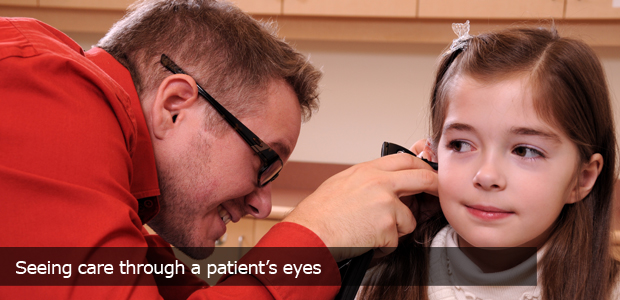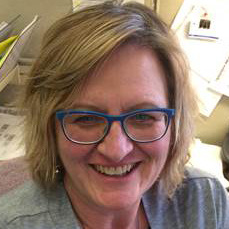Seeing care through a patient's eyes

When it comes to delivering care to patients and their loved ones, I believe that we need to focus on what an individual patient needs. This approach has guided and shaped my career.
That’s why What Matters to You? Day is so important to me.
As a registered nurse and former nurse practitioner, my career has taken me to remote communities in northern Manitoba, Ontario, the Northwest Territories, B.C., as well as California, and Calgary. I am now taking on a new role with Alberta Health Services (AHS) as Executive Director of Communicable Disease Control.
It’s clear to me that the foundations of healthcare are the social health determinants, and healthcare includes a wide range of professionals, so the right patient, receives the right care, from the right provider, at the right time, for the right cost, and that care is provided by the right organization. We don’t need to do it all, but do need to build bridges for those we serve towards self-management, disease prevention and health promotion.
In short, healthcare requires a patient-centered and collaborative interdisciplinary team model that is established upon the social health determinants.
When I talk to patients about what matters to them when it comes to their care, they want to be at the centre of the healthcare conversation. They also understand the value of having a variety of professionals contributing to their care.
For example, in 2013 I was director of health programs at the Alexandra Community Health Centre, located in central Calgary. “The Alex” provides a combination of primary care and Housing First support to the city’s most vulnerable citizens. I had the opportunity to work closely with clients struggling with clients struggling with homelessness and poverty.
During the 2013 flood in downtown Calgary, we knew exactly how vulnerable some of our senior patients were. We were running up and down stairwells in our rubber boots, preparing people to evacuate. We then used our mobile buses, which have exam rooms and a reception area, to go out to the evacuation centres, maintaining the therapeutic relationship clients already had with us.
During the evacuation, our team saw evidence of addictions, hoarding and other mental health problems. As a result, we developed a collaborative outreach team — with our nurse practitioner and a social worker and a mental health clinician from other organizations — to start bringing care directly to seniors.
We also learned that we needed to collaborate with other professionals who aren’t usually considered healthcare providers. For example, we established a partnership with an alternative high school to bring in educators into our clinic, in order to help street youth complete their education. As well, we collaborated with the city’s recreation department to provide instructors for in-house exercise classes in our clinic. Participants were later bridged into the city’s recreation programs and offered substantial discounts to maintain their wellness.
What Matters to You? Day isn’t just about listening to what’s important to patients and clients. It’s about understanding their needs and seeing care through their eyes. As health providers, this allows us to understand and respond to their sometimes complex health needs.










